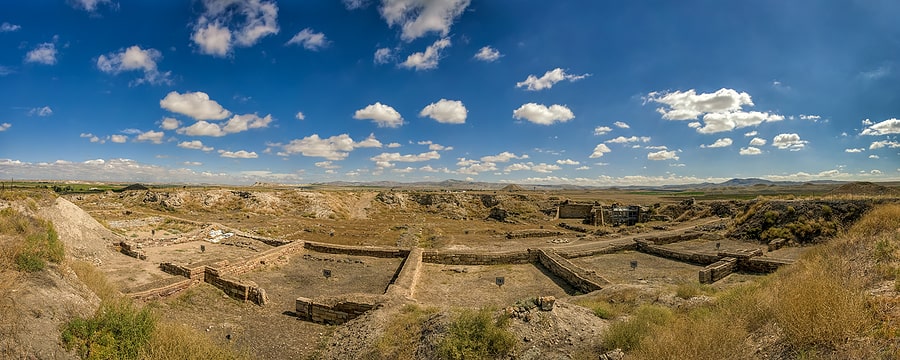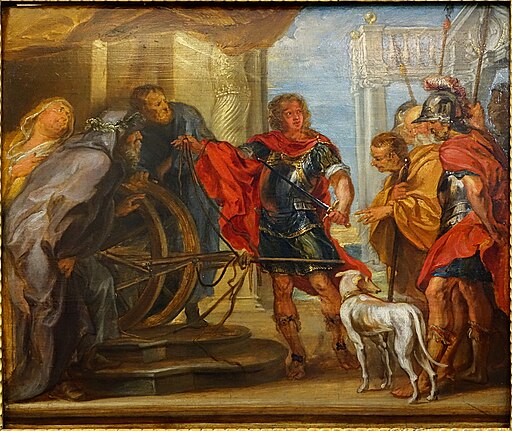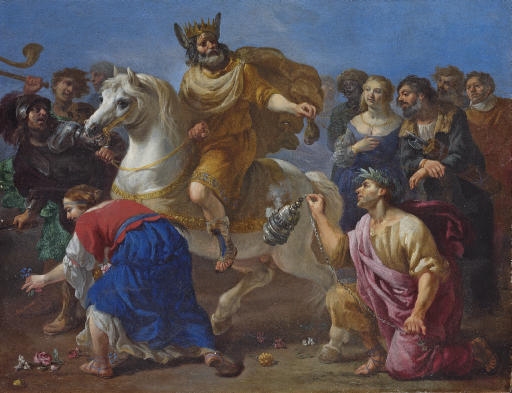You’ve likely heard the story of the mythological King Midas and his touch of gold. The Greeks made the character famous in this oft-told tale, which in modern times has been used to teach children the negative consequences of being too greedy.
But there are many things about this character that you may not know—including the fact that the mythological King Midas was likely based on a real king of the same name. The Greeks penned the myths about him, but he wasn’t Greek at all. As the author of a new historical fantasy about King Midas, I was thrilled to find out all the following—and used many of these facts in my story.
1. King Midas Was Real
Unlike many mythological figures, King Midas was a real person. Historical records, including Assyrian inscriptions, reference a King Mita of Mushki, who is thought to be Midas of Phrygia. These records suggest a powerful ruler involved in regional politics and conflicts.
King Midas lived sometime between 750 and 690 BCE. He ruled the Kingdom of Phrygia, which is located in what is now central Turkey. During his lifetime, the kingdom thrived, with King Midas holding influence over the neighboring kingdoms of Lydia and Assyria.
2. Midas’ Capital City Was Discovered in 1890
German Classicist Alfred Körte discovered Midas’ capital city of Gordion in 1893. Engineers were working on the Berlin-Baghdad Railroad, alongside the modern-day Sakarya River. They came upon some ancient remains. Körte visited the site and, based on ancient Greek and Latin writings about the location, identified it as the capital of Phrygia.
Seven years later, Körte returned to the site with his brother Gustav and spent three months excavating it. They found over 80 tombs and many ancient artifacts. After that, the site was left alone until the 1950s.

3. Archaeologists Are Excavating Midas’ Capital City Now
With the patronage of the University of Pennsylvania, excavation at the city of Gordion began again in 1950, under the direction of Rodney S. Young. He worked at the site for over 17 seasons through 1973. Excavation resumed in 1988 under the direction of Mary M. Voigt and has continued on and off through the present day.
Over the years, archeologists have discovered major portions of Phrygian citadels (fortified areas of the city), cemeteries, mud-brick fortification walls, and many burial tombs (called tumuli).

4. King Midas’ Body Has Not Been Found…Yet
In ancient times, the Phrygians often buried elite members of their society in large, covered tombs called tumuli. (A single one is called a tumulus.) They placed them in locations that would elevate their visibility and impact, indicating the higher status of their occupants.
The most visible Tumulus MM was so named to stand for “Midas Mound.” Researchers initially thought it must house the body of King Midas. About 175 feet tall and built on a ridge, it can be seen from almost anywhere in the valley and dominates all the other tumuli in the area.
When scientists tested the wooden beams in the tomb, however, they dated them to 740 BCE. King Midas appears in Assyrian records as late as 709 BCE. That means that this tomb likely wasn’t his. Based on the date and the grandiosity of the structure, researchers believe Midas made it for his father, King Gordias.
To this day, researchers have not found King Midas’ tomb.

5. Midas’ Father Was Connected to the Legend of the Gordian Knot
You may have heard of the legend of the “Gordian Knot,” which is usually used to describe a complex or unsolvable problem.
As the legend goes, Alexander the Great—the fearless Macedonian king—led his army into Gordion in 333 BCE. In the city, he came upon an ancient wagon with its yoke tied in a knot so complex no one had been able to untie it. In Phrygian tradition, the wagon belonged to King Gordias, Midas’ father. An oracle predicted that whoever could untie it would become the ruler of all Asia.
Alexander tried to untangle the knot. When he failed, he drew his sword and sliced it in half with a single stroke. The citizens hailed him as having solved the ancient puzzle. He later went on to conquer Egypt and large areas of Asia.
Today, the expression “to cut the Gordian Knot” means to get to the heart of the matter quickly.

6. Midas Married a Greek Princess
Despite the Greek myth, King Midas himself was not Greek. He was the ruler of Phrygia and was therefore Phrygian.
According to the Metropolitan Museum of Art, however, he was said to have married a Greek princess, perhaps as an expression of a royal alliance. He was also said to have sent his royal wood and ivory throne as an offering to the sanctuary of Delphi. Greeks often came to ask questions of the great oracle, so it appears Midas had a good relationship with them.
The Phrygians borrowed the Greek alphabet as well—perhaps during Midas’ reign—and the Greeks knew about Phrygian music. This is all we know so far that may explain why the Greeks wrote myths about King Midas.

7. Midas Was a Threat to the King of Assyria
To the east of Phrygia lay the mighty kingdom of Assyria. During Midas’ lifetime, it was ruled by King Sargon II. It is from Assyrian records that we know most of what we know about Midas today.
Between 717 and 709, Assyrian records show that Midas was a thorn in Sargon’s side. He encouraged satellite kingdoms to rise up against Assyria—uprisings that Sargon then had to devote resources to squelch.
Midas himself never submitted to Assyrian rule, either, and refused diplomatic contacts. It wasn’t until 709 that the two kings signed a treaty. It’s thought they did so to join forces against the Cimmerian nomads who had begun to attack from the north.
8. It Doesn’t Seem Midas Had a Lot of Gold
Ancient artifacts and records together confirm that, at the time of Midas’ rule, Phrygia and Gordion, in particular, were at the height of their power.
The University of Pennsylvania called Phrygia “one of the most powerful states to develop in Anatolia.” Monumental structures still inspire awe on the landscape at Gordion, representing the “incredible power and authority of the Phrygian elite.”
As for the gold, historians aren’t sure why the Greeks emphasized it. According to the BBC, “archaeologists haven’t found much gold among the 40,000 artifacts uncovered so far at Gordion.” They’ve found some jewelry and a few gold coins and carvings, but otherwise haven’t discovered evidence that the king possessed a lot of it.
Professor Lynn Roller from the University of California, Davis, has studied Gordion since 1979. She believes the gold in the mythological story is a metaphor for great wealth, which King Midas and his capital city seemed to have.
9. In Another Myth, Midas Had Donkey Ears
Another lesser-known myth about Midas involves the god Apollo, who cursed Midas with donkey ears for his poor musical judgment.
According to the story, after a musical contest between the two, Midas judged Pan a better musician than Apollo. This angered the god, who declared that Midas had ears that clearly couldn’t comprehend the beauty of music. He turned Midas’ ears into donkey ears.
Midas hid his ears under a turban, but his barber, unable to keep the secret, whispered it into the ground. Reeds grew from the spot and when the wind blew, they repeated the secret, spreading it across the land. Midas tried to cut his ears off, but they grew back. He asked Apollo to restore his ears in return for all the king’s wealth. Apollo agreed, but in the end, took Midas’ life.

10. No One Knows How King Midas Died
As to what happened to King Midas, no one knows for sure. Archaeologists have found evidence of a great fire that swept through the city. Historians linked this with a possible attack by the Cimmerian nomads from the northeast.
But though the fire was originally thought to have occurred in 700 BCE, later testing put the date earlier at around 800 BC. That would have been before Midas’ rule.
Nevertheless, records show that “barbarian tribesman from the north” raided Phrygia in the early 600s and eventually sacked Gordion.
Greek and Assyrian sources indicate these invaders were Cimmerians, “a people who crossed the Caucasus under the pressure of the Scythians,” according to author Machteld J. Mellink, writing for Scientific American. The Greeks say Midas committed suicide after that, but as noted, his body has yet to be found.
Note: I based my series, The Midas Legacy, on much of the history listed above. Read more about the first book in the series, The Curse of King Midas, here.

